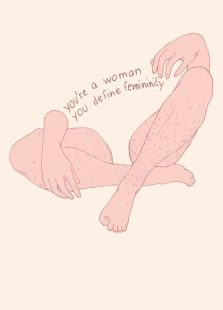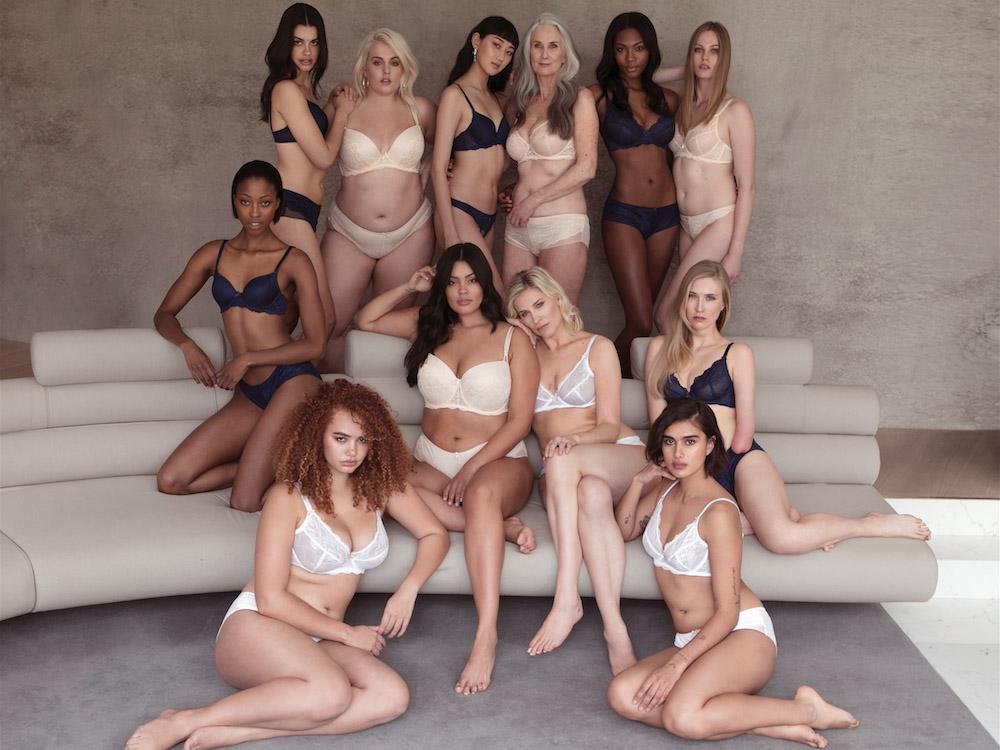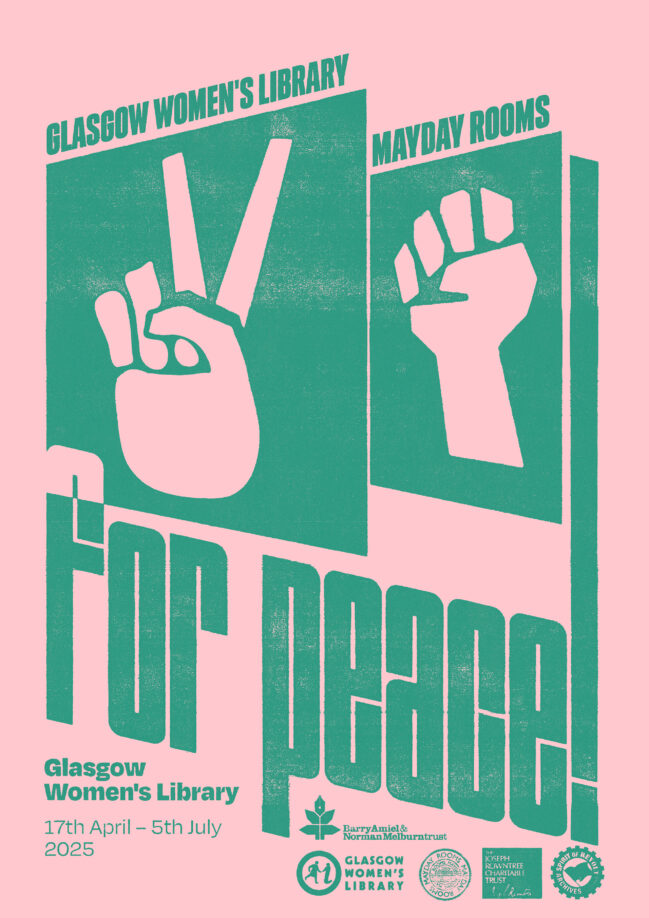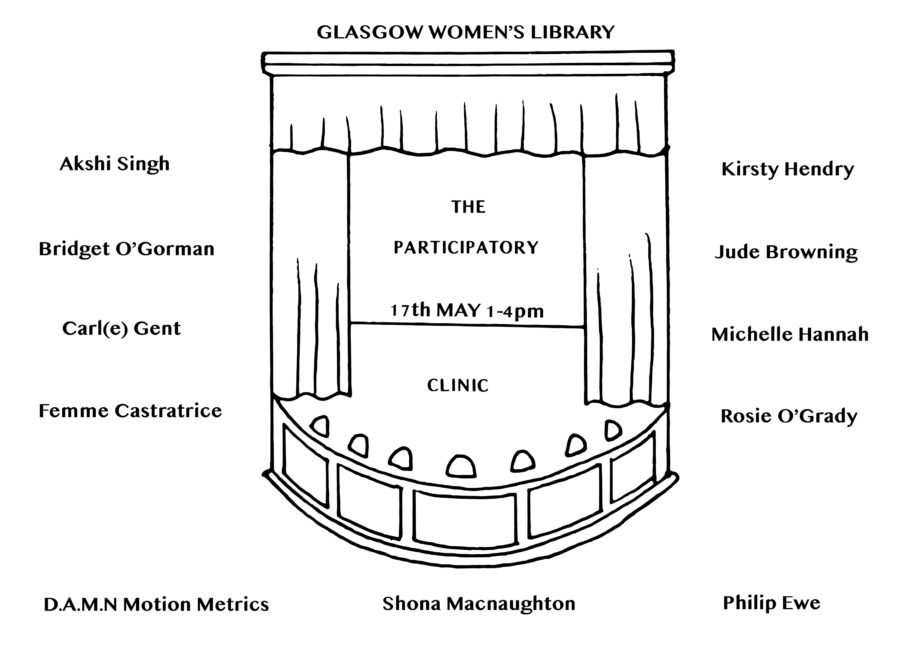Let me set the scene. It is another wintry evening in Aberdeen. I get a text from my flatmate, “Girls are coming over to watch the VS show tonight!! See u soon”. I am instantly confused. What is VS? I do some quick googling. Ah…Victoria’s Secret. At that point, I managed to have 18 years of my life clear of any Victoria Secret. But tonight, I was going to have to endure it.
The girls look excited to watch it when they arrive. Me…not so much. My friends are fashion students so I understand this is fun for them, to look at the outfits (well lingerie) and the models.
It begins. And I instantly feel ugly, fat and like I should of skipped dinner that night. How was this enjoyable? I looked over at my friends and saw them staring in awe and making occasional comments like “I wish I was her”, “She’s so skinny”. “Why can’t I look like her”. I kept silent. After 20 minutes, I decided enough was enough and buried my head in my phone and continuously scrolled.
When it was all over and the girls went home. My flatmate turned round and asked “Are you OK? You were super quiet there.” I played it down and just said I wasn’t that keen on Victoria Secret that’s all.

All my life I have struggled with how I look and my weight especially now after being diagnosed with PCOS (Poly Cystic Ovaries Syndrome). I was bullied since the age of seven for being chubbier than most girls. The bullying made me stay at home and comfort eat which was an issue I only managed to control recently. I have tried the fad diets and have looked at the ‘thinspo’ pages for hours on end. So, watching the Victoria Secret Show was a huge reminder that I am not good enough.
I don’t want to shame slim women because I think the VS models are beautiful. But they don’t represent the average woman or customer of VS today. They are real people, but they are not a reflection of how we should look at our bodies and at women. Victoria Secret is portraying an ideal of what women have been force fed all our lives. We are told to have the tiny frame, flat stomach, and a little waist with huge breasts and bums. We are told to have sex appeal but not too much. The show romanticises these troubling ideas to women especially teenagers. VS models will often take extreme measures in order to achieve their physiques. Angel Adriana Lima hit the runway just eight weeks after she gave birth to her second child in 2012. It is said she was working out from four to six hours daily, and consuming a liquid diet. And she even ditched water altogether for the last few days to drop even more weight. This is teaching teens and young women the early stages of eating disorders by glamourising dangerous methods like the excessive exercising, lack of eating and rapid weight loss which isn’t always naturally achievable. I must note however, most models are naturally born with that physique and it can be regarded as a stereotype to believe every model must “starve” themselves in order to achieve that figure. However, it has been documented for years that models are told continuously to lose weight or they won’t be able to model for a particular brand etc. Weight is an issue from the start in this industry.
Let’s have a his tory lesson on Victoria Secret. Victoria Secret is one of several brands owned by the parent company, L Brands. Victoria Secret is the largest retailer under L Brands making up around 60% of the company’s total sales. And 35% of that is just bras. The ‘L’ in L Brands, stands for ‘The Limited’, the name of the company’s first brand. Businessman Leslie Wexner founded The Limited in 1963 as a clothing store that brought the fashionability of Europe and America’s coastal cities to the women of the Midwest. By 1979, The Limited has gone public and opened 318 stores across the nation. In the early 1980s, Wexner visited one of his stores in San Francisco. While there, he stumbled upon a shop: a lingerie retailer called Victoria’s Secret.
tory lesson on Victoria Secret. Victoria Secret is one of several brands owned by the parent company, L Brands. Victoria Secret is the largest retailer under L Brands making up around 60% of the company’s total sales. And 35% of that is just bras. The ‘L’ in L Brands, stands for ‘The Limited’, the name of the company’s first brand. Businessman Leslie Wexner founded The Limited in 1963 as a clothing store that brought the fashionability of Europe and America’s coastal cities to the women of the Midwest. By 1979, The Limited has gone public and opened 318 stores across the nation. In the early 1980s, Wexner visited one of his stores in San Francisco. While there, he stumbled upon a shop: a lingerie retailer called Victoria’s Secret.
Retail stores for women’s lingerie was very different then to how it is now. American women typically viewed their garments on a binary: strictly functional for day to day or sexy for special occasions. Due to this, lingerie was seen as relatively low demand and was relegated to the corners of second floors in the department stores. Victoria’s Secret founder, Roy Raymond wanted to change this and opened the first store in Palo Alto, California in 1977. By the time, Wexner discovered one of their stores, they had opened four more stores in San Francisco when combined, all five stores made 6 million in sales that year despite struggling. Raymond’s business rested on the idea that men like him bought lingerie for the women in their lives. Therefore, the stores were created to suit men’s taste: dark colours, leather sofas, racy garments. Despite this, it was reported that men didn’t buy much and women found the lingerie they did buy uncomfortable or unappealing to their tastes. By 1982 Victoria’s Secret was on the verge of bankruptcy and Wexner saw this as an opportunity to do for lingerie what The Limited have done for clothing and bought Victoria Secret for around $1 million.

Wexner set to work to transform the undergarment habits of American women. He constructed standard supportive bras but spiced them up with vivid colours or patterns. He reinvented the stores to be reminiscent of a 19th century English boudoir by using softer, more stereotypical “feminine” colours. His idea was to create a store where ‘the sexiest’ women could buy lingerie, and then invite ‘regular’ women to partake in this glamour fantasy (for a steep price tag) which ultimately worked. The beginning of Victoria Secret fit in with the sexual revolution and the workplace revolution which meant millions more of them had disposable income. And they didn’t spend that disposable income on weddings or children because they increasingly delayed those choices. By 1995, Victoria Secret had 670 store nationwide and $1.9bn in sales. In the beginning, Victoria Secret elevated as a brand to correspond to what was happening the world culturally in terms of women exercising their own power, their own feminist movement and their own rights which Victoria Secret was able to capitalise on that.
The annual fashion show became a ratings powerhouse. It drew in 12.4 million viewers in 2001 when it moved to network television and it launched the careers of now-supermodels like Heidi Klum, Gisele Bündchen, Adriana Lima and Tyra Banks. By 2006, one out of every three purchases in the intimate apparel industry came from a Victoria’s Secret.
As the lingerie and athleisure markets started to make major changes, as younger brands established themselves as retailers whose products and messaging more accurately reflected the culture and societal changes. Victoria’s Secret fell behind as their changes came too late. Brands like Aerie, Third Love and celebrity lines like Rihanna’s Savage x Fenty, Kate Hudson’s Fabletics and Beyonce’s Ivy Park, all seen high levels of success for their diversity in size and race which paved a huge problem for Victoria Secret. This retailer was once heralded as a revolutionary but was now falling behind on the times. But how?
 First of all, women increasingly prioritise comfort and the more natural look. Women are swapping their wired, padded, push up bras for more comfort styles like bralettes, bandeaus, body suits or sometimes, no bra at all! By the time, Victoria Secret had introduced the bralette style in 2016, the market was already crowded with the brands mentioned before. Especially, Aerie who hit the mark with young consumers as their annual store sales have increased by double-digits each year since 2015. On the athleisure side, Victoria’s Secret was late again. The athleisure market had grown by over 40 percent from 2013 to 2018, as more women were sporting yoga pants to cafes, grocery stores and of course, yoga classes. So when Victoria’s Secret finally introduced their line of athleisure clothing in 2016 it had to contend with the existing behemoths like Lululemon and Nike.
First of all, women increasingly prioritise comfort and the more natural look. Women are swapping their wired, padded, push up bras for more comfort styles like bralettes, bandeaus, body suits or sometimes, no bra at all! By the time, Victoria Secret had introduced the bralette style in 2016, the market was already crowded with the brands mentioned before. Especially, Aerie who hit the mark with young consumers as their annual store sales have increased by double-digits each year since 2015. On the athleisure side, Victoria’s Secret was late again. The athleisure market had grown by over 40 percent from 2013 to 2018, as more women were sporting yoga pants to cafes, grocery stores and of course, yoga classes. So when Victoria’s Secret finally introduced their line of athleisure clothing in 2016 it had to contend with the existing behemoths like Lululemon and Nike.
Secondly, the growing movement to represent all types of people and bodies has gone mainstream. VS competitors were increasingly emphasising racial, body and gender inclusivity in their messaging. Look at brands like Ivy Park who used transgender model and actress, Laverne Cox to promote the clothing. Despite this, Victoria’s Secret still cling to its “angels” who epitomise the slim yet busty bombshell look and sell the ‘male’ fantasy of what a woman should be which consumers increasingly shun as unrealistic and demeaning.
VS have taken some minor steps toward showing a diverse group of models on the runway — last year, they casted 19 models of colour, including one with visible vitiligo, a condition in which skin loses its pigment in patches. But there’s still one realm of inclusivity they apparently haven’t considered: size. A former stylist for the shows commented, “There’s a body type and a size type that they believe in. It’s big t*ts, tiny waist, tall skinny legs. If they don’t have the body that Ed [Razek, Victoria’s Secret’s senior creative] deems the perfect woman’s body, they will not be in the show.”
skinny legs. If they don’t have the body that Ed [Razek, Victoria’s Secret’s senior creative] deems the perfect woman’s body, they will not be in the show.”
Victoria’s Secret found themselves in hot water when, Ed Razek, the CEO spoke out on the diversity issue which included the use of the word “transsexual,” an outdated and offensive term — Razek said that trans and plus-size women do not epitomise the “fantasy” that Victoria’s Secret is trying to sell. “Shouldn’t you have transsexuals in the show? No. No, I don’t think we should. Well, why not? Because the show is a fantasy.. It’s a 42-minute entertainment special. That’s what it is.” It might be a 42- minute entertainment special for him. But to all women, it is not. Writers and Twitter users slammed the retailer calling it and its show outdated, transphobic and more. And Victoria’s Secret competitor, Third Love called out the brand in a full page ad in the New York Times. Third Love: An Open Letter to Victoria Secret

Razek later apologised, stating he would be open to casting transgender models. However, to this date, no transgender model has been casted for the Victoria’s Secret Show.
We are constantly evolving as a society and what is socially acceptable and what isn’t. So there isn’t really a valid excuse for having no diversity. We don’t live in a world where women all look like Bella Hadid and all men look like Brad Pitt. We need to see all people of shapes, sizes, ethnicity and abilities on the catwalk.
Finally, Victoria’s Secret could face backlash from consumers for increasing concern over companies ethics. Victoria’s Secret continuously rates poorly on the annual ‘Ethical Fashion Report’ and has faced many accusations over the years, including reports of child and slave labor. Victoria’s Secret were reached out to for a comment on these claims however they have declined. Victoria’s Secret’s also does not use eco-friendly materials in its collection and there is no evidence that the brand has set a greenhouse gas emissions reduction target. How Ethical Is Victoria’s Secret?
So you are probably wondering, why do people still buy from here?
Many customers of the brand tend to gloss over these issues because they like the underwear which benefits Victoria Secret ultimately. And again, isn’t a valid excuse. To me, it feels more like it is a case of turning a blind eye to the lack of inclusivity.
In 2019, Victoria’s Secret feels like a dying brand. It is closing 53 of their stores this year which have cited a decline in performance. The “Victoria’s Secret Fashion Show” on television lost nearly half of its total viewers in five years. Victoria’s Secret product assortment is lacking in terms of understanding what the target audience wants. And it is no longer a secret (nice one, Mhairi), that Victoria’s Secret is in fact insanely problematic.
It is an eye opening experience to see VS’s backlash. And it further confirms that us, women have the power in our pocket to support brands that are inclusive and represent who you are. We have the power to change the narrative of what makes a woman sexy or attractive. We have the power to not conform to stereotypes. And lastly, we have power to make choices for ourselves in regards to clothing and beauty.
Victoria’s Secret is out of touch, and striving to appeal to the men of the Mad Men era. And it’s over.






